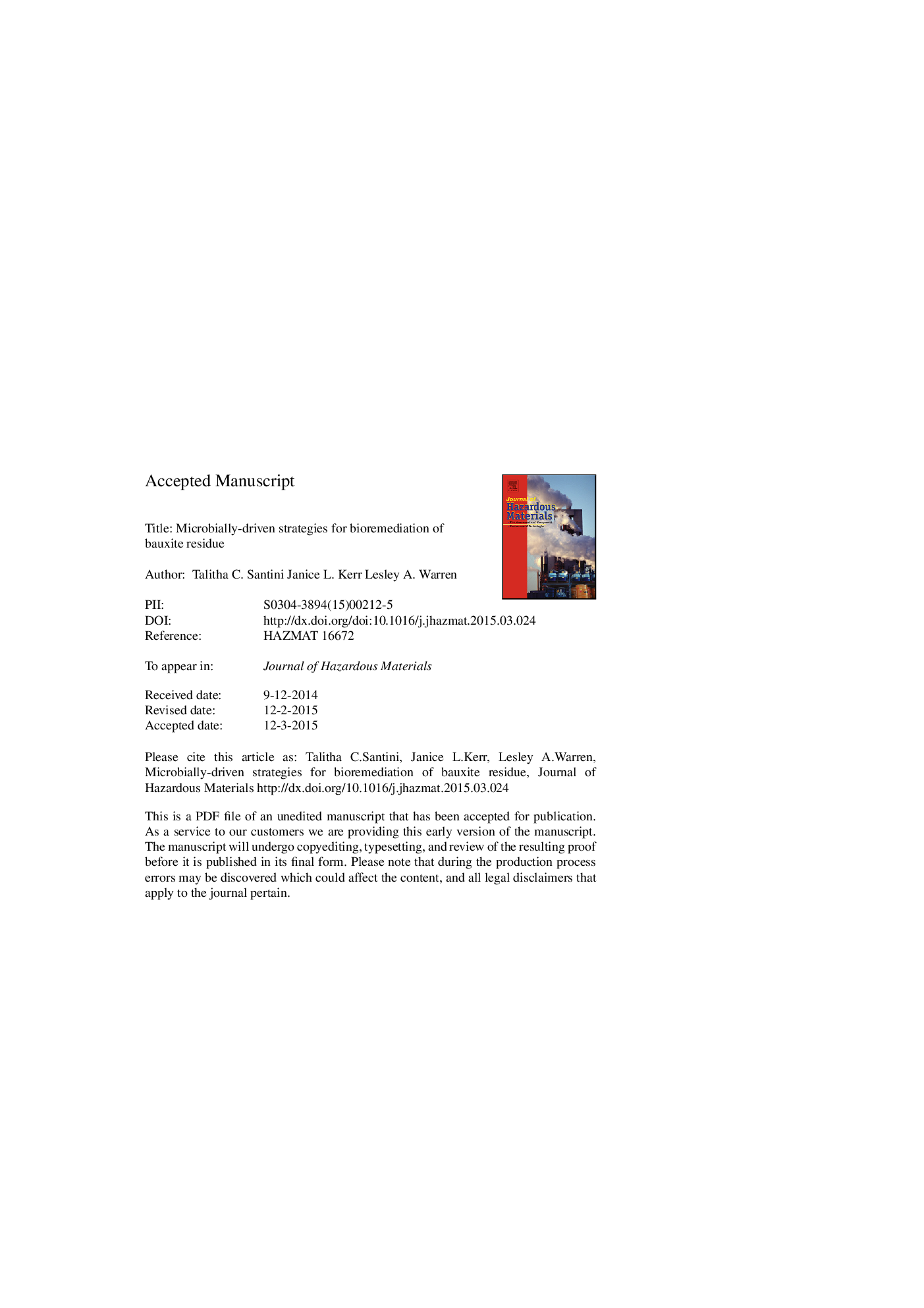| Article ID | Journal | Published Year | Pages | File Type |
|---|---|---|---|---|
| 576083 | Journal of Hazardous Materials | 2015 | 72 Pages |
Abstract
This review considers natural alkaline, saline environments that present similar challenges for microbial survival and evaluates candidate microorganisms that are both adapted for survival in these environments and have the capacity to carry out beneficial metabolisms in bauxite residue. Fermentation, sulfur oxidation, and extracellular polymeric substance production emerge as promising pathways for bioremediation whether employed individually or in combination. A combination of bioaugmentation (addition of inocula from other alkaline, saline environments) and biostimulation (addition of nutrients to promote microbial growth and activity) of the native community in bauxite residue is recommended as the approach most likely to be successful in promoting bioremediation of bauxite residue.
Keywords
Related Topics
Physical Sciences and Engineering
Chemical Engineering
Chemical Health and Safety
Authors
Talitha C. Santini, Janice L. Kerr, Lesley A. Warren,
